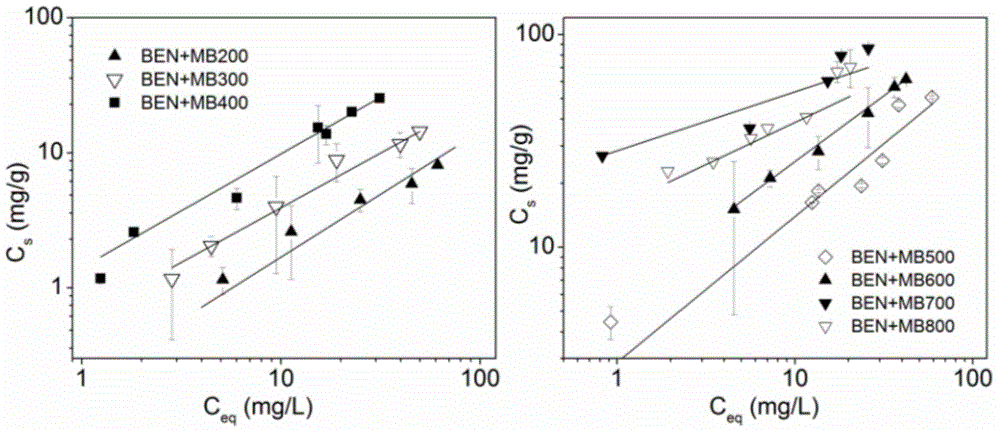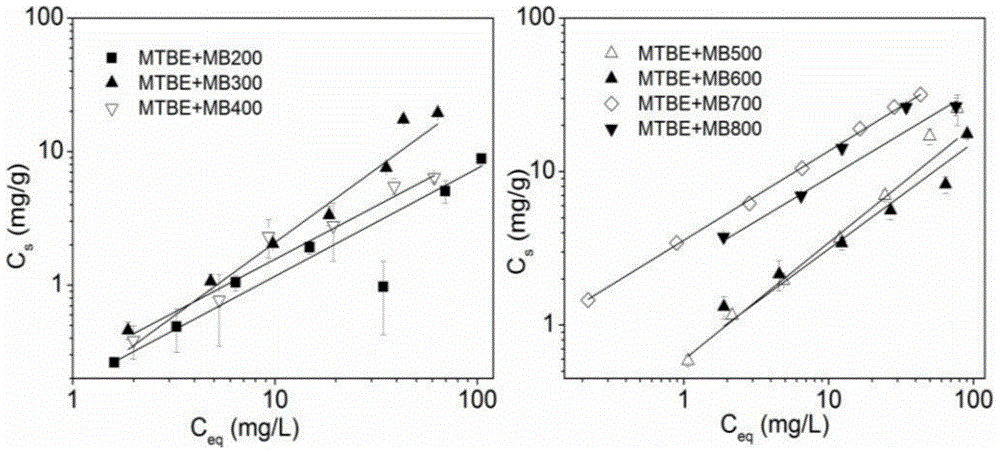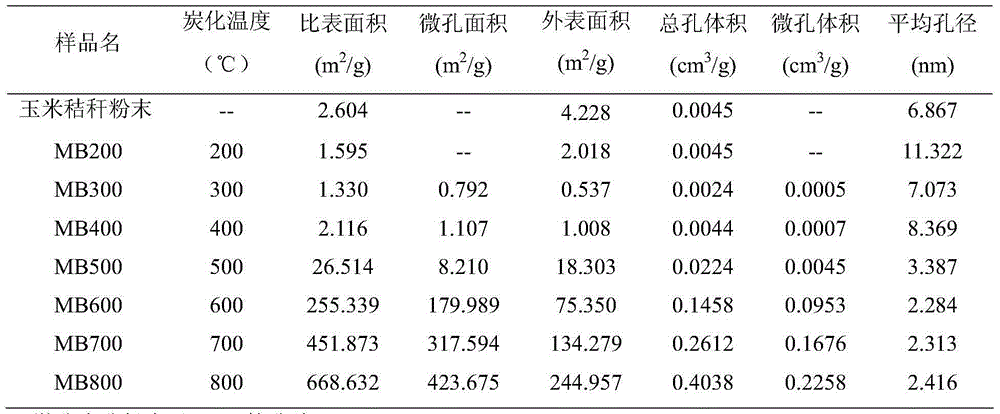Biochar adsorbent for petroleum organic pollutants, and preparation method and application thereof
A technology of organic pollutants and adsorbents, applied in the field of biological carbonaceous adsorbents and their preparation, can solve the problems of groundwater pollution, difficult to decompose, high water solubility, etc., and achieve the effect of cheap price, obvious adsorption effect and large output
- Summary
- Abstract
- Description
- Claims
- Application Information
AI Technical Summary
Problems solved by technology
Method used
Image
Examples
Embodiment 1
[0023] Example 1 Preparation of biological carbonaceous adsorbent by using corn stalks
[0024] (1) Corn stalks were taken from a farmer’s house in Langfang, Hebei Province, removed ears and leaves, air-dried for 2 days, and dried in an oven at 105°C for 14 hours; then crushed into powder with a particle size of less than 40 mesh.
[0025] (2) Place 7 groups of corn stalk powders in crucibles, seal them and heat and carbonize them in a muffle furnace for 6 hours. The temperature is between 200 and 800 °C, and the interval between each group is 100 °C. Wait for the instrument to cool down to room temperature. The crucible was taken out, and biochar at 7 different carbonization temperatures were prepared.
[0026] (3) Soak the carbonized product in 1mol / L HCl solution for 12 hours to remove ash, then wash it with deionized water until neutral, and dry it in an oven at 105°C for 14 hours to prepare the corn straw biochar Recorded as MB200, MB300, MB400, MB500, MB600, MB700 and M...
Embodiment 2
[0031] The adsorption research of embodiment 2 biological carbonaceous to benzene
[0032] 1. Benzene (liquid) is used as the adsorbate, purchased from Beijing Chemical Factory, with a purity > 99%, and the molecular formula is C 6 h 6 .
[0033] 2. Weigh 0.05g of 7 different biochar samples (MB200~MB800) into 40mL brown headspace bottles. Add 30 mL, 0.01 mol / L CaCl by mass method using a 5 mL pipette 2 solution to simulate the ion existence state of organic matter in natural water bodies. Quickly add benzene solutions with different initial concentrations (0.872-75.807mg / L) into a 40mL brown headspace vial with a micro-syringe, quickly cap the bottle and place it in a constant-temperature air shaker at 25°C at a speed of 175rpm / min in the dark. Oscillate down.
[0034] 3. Set up 2 parallel samples and 1 control sample in each group (the control sample is a biocarbon blank control group, mainly to observe the possible volatilization of organic pollutants, photolysis and l...
Embodiment 3
[0037] The adsorption research of embodiment 3 biological carbonaceous to MTBE
[0038] Adopting MTBE (liquid state) is analytically pure, and buys Bai Guoyao Group Chemical Reagent Co., Ltd., purity > 99%, and molecular formula is C 5 h 12 0. Adopt the same method as embodiment 2, just replace benzene with MTBE, finally according to the liquid phase equilibrium concentration (C eq ) and solid-phase adsorption capacity (C s ), draw the adsorption isotherm, and use the Freundlich type adsorption isotherm to fit the data, see attached figure 2 . The results showed that the corn stalk biochar had a strong adsorption capacity for MTBE in the solution, and the adsorption performance was the best at the carbonization temperature of 700°C and 800°C.
PUM
 Login to View More
Login to View More Abstract
Description
Claims
Application Information
 Login to View More
Login to View More - R&D
- Intellectual Property
- Life Sciences
- Materials
- Tech Scout
- Unparalleled Data Quality
- Higher Quality Content
- 60% Fewer Hallucinations
Browse by: Latest US Patents, China's latest patents, Technical Efficacy Thesaurus, Application Domain, Technology Topic, Popular Technical Reports.
© 2025 PatSnap. All rights reserved.Legal|Privacy policy|Modern Slavery Act Transparency Statement|Sitemap|About US| Contact US: help@patsnap.com



